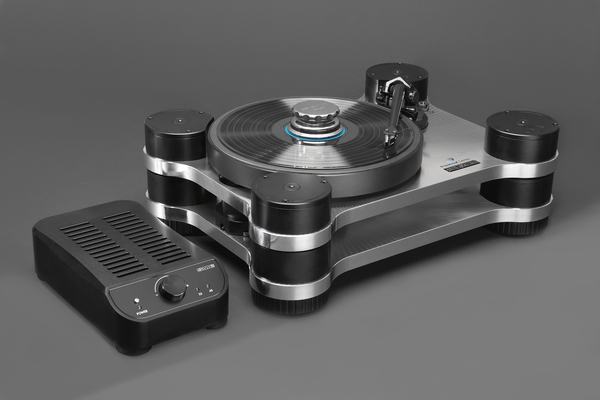Transforming your business at the competitive edge

In our fast-paced modern world, where digital connectivity has become as essential as electricity, it’s easy to overlook the potential vulnerabilities that come with it. Specifically when it comes to computing models.
Most restaurants have two types of computing happening: necessary day-to-day operations such as smart kitchens, IoT, ordering with POS and so on, and centralised computing that’s connected to the entire chain of restaurants covering issues such as payroll, financial reports, global investments and supply chain.
Traditionally, companies use centralised computing models that involves a central hub where all raw data flows to. That sounds fine on paper. But in practice, there can be challenges associated with this type of IT architecture.
For one, latency. When dealing with slow and unreliable connections, it can take longer for data to travel from a spoke (restaurant and store locations, for example) to a centralised hub location for processing and then back to the spokes. For instance, if a local coffee shop experiences high latency, the time it takes to process data can introduce delays. This extended latency can cause disruptions in service, leading to frustrated customers and potential revenue loss.
In addition to connectivity issues impacting payment systems, imagine a situation where a restaurant depends heavily on smart kitchen capabilities or IoT devices. These tools help manage inventory, adjust temperature settings automatically and more. But in a centralised model, if the internet connection goes down unexpectedly, all these automated processes could come to a standstill. The result? Potential chaos in the kitchen and disappointed customers. Ensuring solid and dependable connectivity is key to keeping everything running smoothly and customers happy in today’s centralised world.
Centralised computing requiring large data volumes also faces challenges in remote areas with inconsistent bandwidth. Transmitting extensive data to centralised cloud centres can overwhelm networks, causing congestion and increased costs, and even impacting critical business functions such as card payment processing.
Consider a cruise ship where all three challenges come into play: bandwidth, connectivity and latency. Bandwidth is a critical concern due to the high concentration of passengers and operational needs. Traditional centralised computing models often struggle with the volume and complexity of data traffic in such environments.
The connectivity can be unreliable: the ship’s movement and location at sea can lead to frequent signal drops and fluctuations. Combined with low bandwidth, this creates significant challenges for data transmission.
High latency exacerbates the situation, as the time it takes for data to travel between the ship and central servers results in slow updates and delayed responses. Real-time tracking of onboard services, live entertainment feeds and passenger communications can all suffer, leading to degraded service quality and a frustrating experience for both passengers and crew.
Moreover, troubleshooting technical issues on a ship at sea, compounded by bandwidth, connectivity and latency problems, presents significant challenges. Imagine if onboard computing could operate autonomously, without the need for constant IT oversight.
Enter edge computing.
Edge computing addresses these challenges by bringing the data processing closer to the source of data, and closer to where the processing is actually needed. This approach enhances performance, reduces costs and allows for your business to remain highly available, making it a critical solution for modern, data-driven applications in remote environments. Additionally, edge computing ensures consistency of operations across your brand, irrespective of the quality of internet connectivity.
So why don’t all businesses use edge computing?
The barriers begin with hardware. It’s not just a computer in a restaurant. You need a cluster of machines (or nodes) that provides reliability similar to what you would experience in the cloud. If one goes down, backups are ready to pick up the slack.
Zero-touch provisioning is crucial as well. Most restaurants don’t have dedicated IT professionals in every location to help set up their cluster and troubleshoot issues locally. So if a node in the cluster goes down, you need a simple way for a non-technical restaurant worker to be able to remove the bad device, plug in the replacement device and walk away.
You also need to think about monitoring. How do you know if there is a problem with a node in a cluster at a restaurant – especially when you don’t have IT professionals on-site? You don’t just need a remote monitoring solution. You also need remote troubleshooting capability. On top of that, these capabilities need to scale across potentially thousands of clusters (one in each restaurant).
Be careful though: you don’t want to allow connections from the internet into the restaurant, so your remote troubleshooting and monitoring needs to happen without the ability to directly connect to the cluster.
Essentially, the system needs to be self-healing so that it can automatically, and without human intervention, recover from internet and power outages.
Finally, space is precious. Do you have room to house large rack-mounted servers in the back of your restaurant? Probably not. So you need a cluster of small, yet powerful, machines to provide reliability while taking up very little physical space in your restaurant.
These are the challenges companies face when deciding on edge computing.
That’s where Artisan Studios comes in. With our turnkey Artisan Edge Platform, backed by our wealth of expertise in the foodservice industry, we provide organisations with a solution that doesn’t disrupt their operations, even in offline scenarios.
The right edge computing solution for your business
When it comes to edge computing, Artisan addresses the critical pain points faced by businesses in managing their digital infrastructure at scale. Our comprehensive management layer and automation simplify the deployment, monitoring and management process, allowing you to focus on deploying your applications across thousands of clusters effectively. This ensures that applications such as sales tax calculators, IoT data collection and smart kitchen capabilities are consistently updated and functional across all store locations, significantly reducing administrative overhead and potential for errors.
By leveraging innovative technology, we enable businesses to remain operational even when disconnected from the internet. This not only ensures continuity of service but also enhances the customer experience by minimising disruptions.
Even our hardware is mindful of restaurant realities. Our compact devices are small and easy to set up and maintain, so you don’t need an IT professional on-site to deploy and maintain the Artisan Edge Platform.
Experience firsthand how Artisan Studios’ innovative “edge in a box” solution can transform your business operations. Empower your restaurants to autonomously deploy and run critical applications, ensuring seamless functionality and continuity even during internet disruptions. Take the next step towards reliable, resilient computing tailored for your business.
Achieve enhanced stability in your remote environments with the Artisan Edge Platform.
By Tim Mitrovich, CEO/Founder, Artisan Studios

Business Reporter Team
Most Viewed
23-29 Hendon Lane, London, N3 1RT
23-29 Hendon Lane, London, N3 1RT
020 8349 4363
© 2024, Lyonsdown Limited. Business Reporter® is a registered trademark of Lyonsdown Ltd. VAT registration number: 830519543





